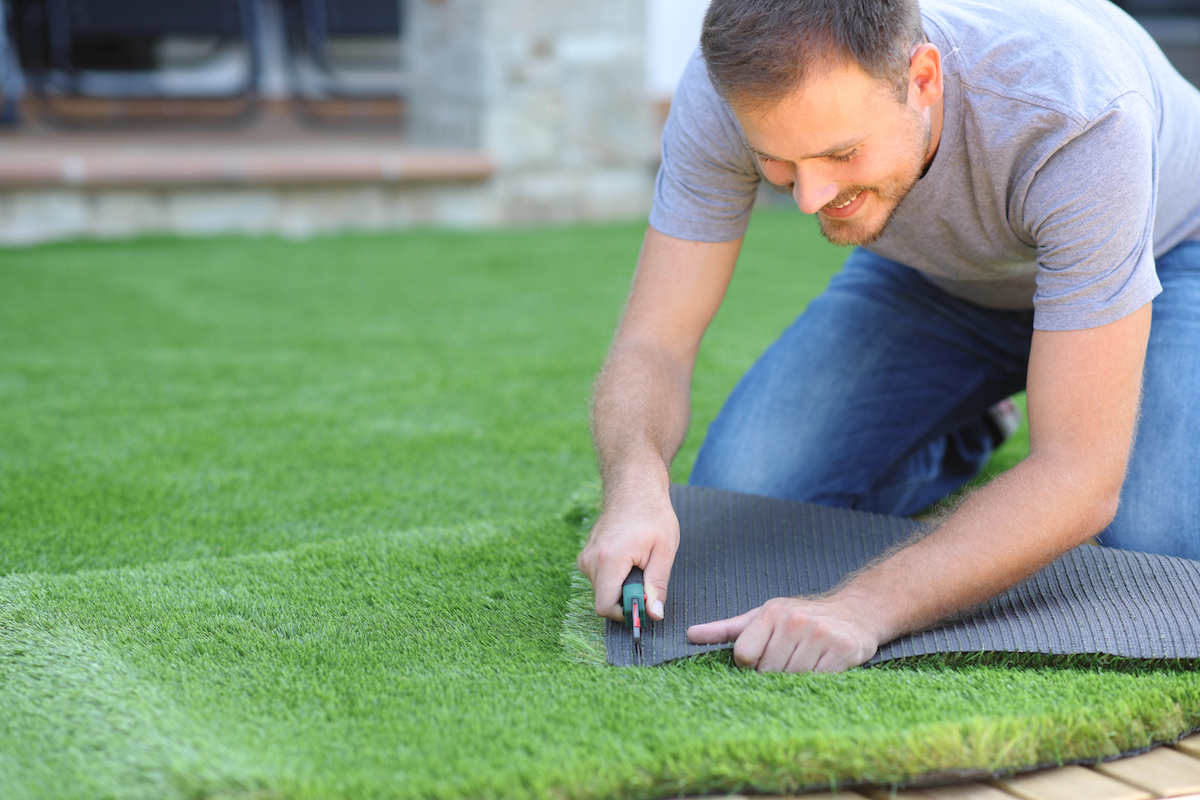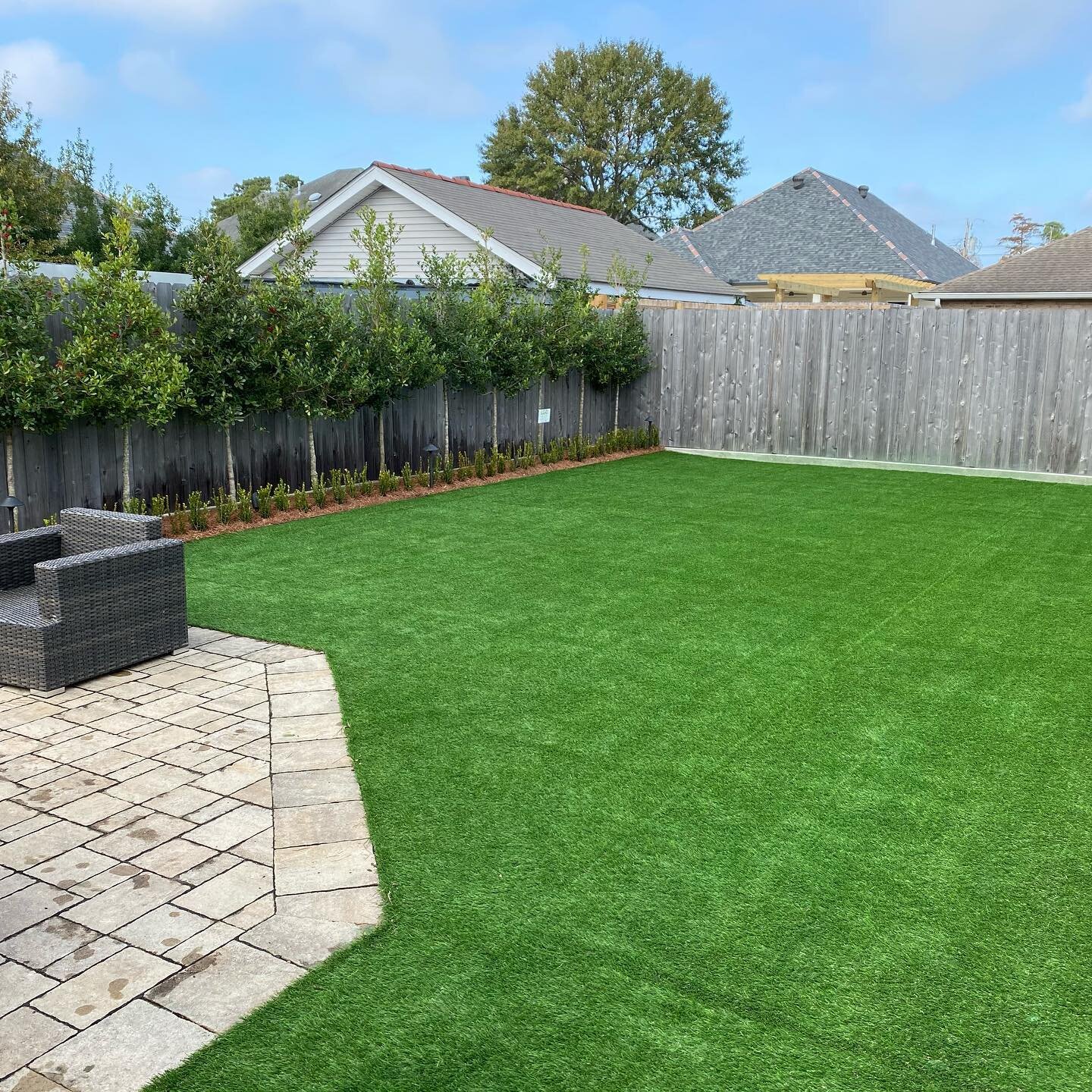Experience a Flawless Lawn with Arizona Artificial Turf for Any Outdoor Space
Experience a Flawless Lawn with Arizona Artificial Turf for Any Outdoor Space
Blog Article
Look Into the Environmental Perks of Opting for Synthetic Grass Solutions
The fostering of artificial lawn options offers a compelling opportunity to resolve pressing ecological obstacles. By considerably reducing water use and reducing the application of harmful chemicals, these alternatives not only promote lasting landscape design yet also secure neighborhood communities.
Water Conservation Conveniences
One of the most considerable advantages of artificial turf is its ability to save water. In contrast, artificial grass does not require watering, substantially decreasing the overall need for water resources.
By eliminating the demand for normal watering, synthetic grass adds to sustainable landscape methods and helps minimize the environmental effect of excessive water usage. Furthermore, the preservation of water includes the decrease of drainage, which can bring about soil disintegration and river contamination.
Additionally, the installment of synthetic grass enables home owners and towns to allot water sources much more efficiently, concentrating on necessary usages such as drinking water and farming. The change in the direction of synthetic grass not only advertises responsible water usage however likewise straightens with wider ecological objectives targeted at maintaining natural sources.
As areas significantly focus on sustainability, the water conservation advantages of synthetic grass provide an engaging situation for its adoption in business and household landscaping jobs.
Decreased Chemical Usage
The shift to man-made grass significantly decreases the dependence on chemical treatments frequently used in natural yard upkeep. Typical lawn administration normally entails the application of plant foods, herbicides, and pesticides to promote development and control bugs. These chemicals can posture threats to human health and wellness, regional wildlife, and the environment, adding to dirt and water contamination.
In contrast, synthetic turf removes the need for these harmful compounds. By reducing the launch of synthetic substances into the ecosystem, artificial lawn promotes much healthier soil and water systems.
Furthermore, the lack of chemical runoff related to artificial lawn installments helps secure neighborhood waterways from air pollution, supporting marine life and maintaining biodiversity. Arizona turf. As areas progressively focus on lasting practices, going with synthetic grass provides a feasible solution that aligns with ecological preservation objectives. With this change, building proprietors can delight in lush environment-friendly rooms without compromising eco-friendly health, leading the means for an extra lasting future
Reduced Carbon Impact

Additionally, the installment of synthetic grass can cause significant water conservation. All-natural grass require considerable amounts of water for watering, which not just includes in the carbon impact connected with water extraction and therapy yet also stress regional water resources. On the other hand, synthetic grass needs very little maintenance, calling for no watering, thereby substantially lowering water use and its linked energy prices.
In addition, the long life of synthetic grass contributes to its lower carbon impact. With a life-span of approximately 15 years or even more, the demand for constant replacements is lessened, leading to much less waste and reduced power intake in production and taking care of traditional grass alternatives. Overall, synthetic grass presents a lasting choice for ecologically mindful landscape design.
Habitat Preservation
Environment conservation is a crucial consideration in the argument over landscape design selections, particularly when comparing synthetic lawn to all-natural lawn. All-natural yard yards usually need comprehensive upkeep, consisting of using herbicides, plant foods, and pesticides, which can detrimentally affect local ecosystems. These chemicals can seep right into the official source soil and rivers, harming indigenous plants and fauna and interrupting regional habitats.
In contrast, man-made grass presents a possibility to reduce the ecological footprint of landscape design. By choosing artificial turf, home owners can reduce the disruption of all-natural habitats related to traditional yard care methods. Synthetic grass removes the need for hazardous chemicals, thereby securing neighboring wildlife and maintaining the integrity of bordering environments. Additionally, the installation of fabricated grass can lead to the conversion of former lawn locations into more biodiverse landscapes, such as pollinator gardens or native plant locations, which can sustain local wildlife.
Ultimately, the transition to artificial turf not only saves water and minimizes upkeep efforts but additionally cultivates a more harmonious partnership between human activities and the natural surroundings, advertising environment conservation while doing so.
Long-Term Sustainability
Long-lasting sustainability is a critical consider evaluating the benefits of synthetic grass over traditional grass yards. discover this info here Among the most substantial advantages of synthetic grass is its resilience; it can last up to 15-20 years with marginal upkeep, whereas all-natural turf requires constant reseeding and substitute. This durability reduces the requirement for constant resources, such as water, plant foods, and pesticides, which are important for keeping a healthy and balanced yard lawn.
In addition, fabricated turf adds to a decrease in carbon exhausts connected with grass care tools. Standard grass commonly call for gas-powered mowers, leaners, and blowers, every one of which contribute to air contamination. Arizona turf. In contrast, synthetic grass gets rid of the requirement for such tools, promoting a cleaner atmosphere
Additionally, the production of synthetic grass increasingly utilizes recycled materials, enhancing its sustainability profile. As suppliers adopt green methods, the ecological impact of synthetic grass proceeds to decrease.

Final Thought
The fostering of synthetic grass services presents substantial ecological benefits, consisting of considerable water conservation, minimized reliance on harmful chemicals, and a reduced carbon impact. Furthermore, synthetic grass aids in maintaining all-natural environments by lessening land disruption and advertising long-term sustainability via making use of sturdy products. Jointly, these aspects highlight the potential of man-made grass to contribute positively to ecological health and supply a sensible choice to traditional landscaping techniques in an increasingly resource-conscious world.
In comparison, synthetic lawn does not need watering, considerably lowering the general demand for water resources. By lessening the release of artificial compounds right into the ecological community, fabricated grass promotes much healthier soil and water systems.
Additionally, the installation of man-made turf can result in significant water conservation. In comparison, synthetic lawn needs very little upkeep, requiring go to the website no watering, therefore considerably lowering water usage and its linked energy prices.

Report this page